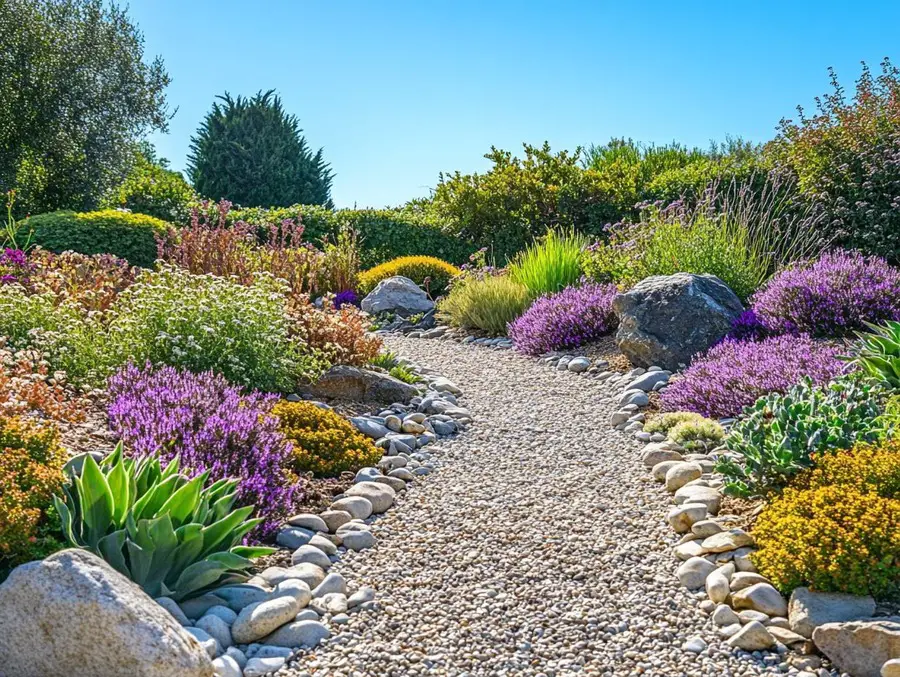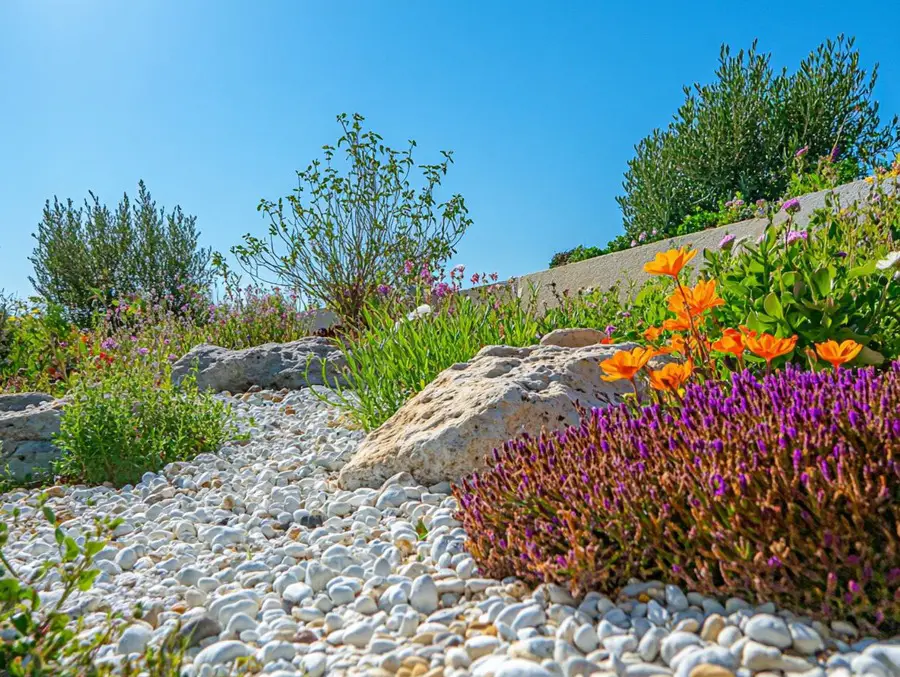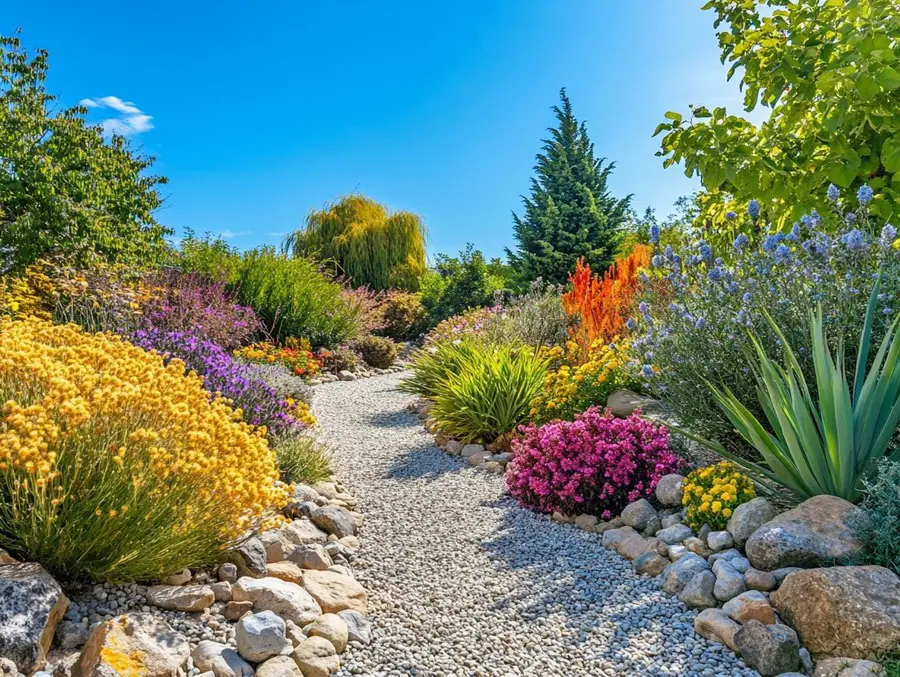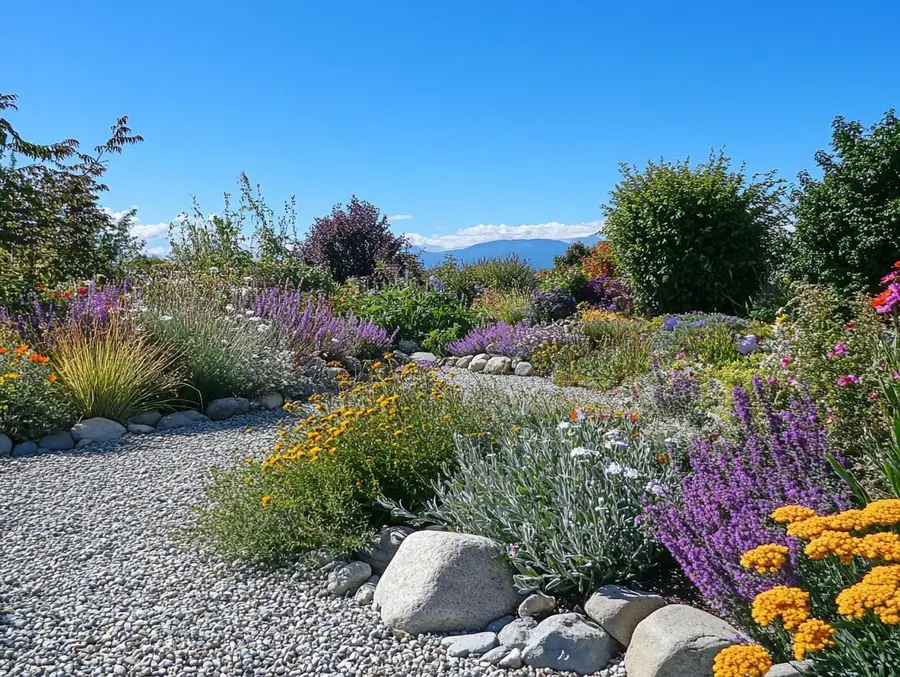
Want to find out how to start xeriscaping for beginners? Xeriscaping isn’t just another gardening trend.
It’s actually a sustainable approach that turns your landscape into a vibrant, water-efficient haven.
Here, you’ll get to explore what xeriscaping is all about, diving into its principles while shining a light on its environmental and financial benefits.
You’ll learn how to design your own xeriscape garden with key elements, pick out drought-tolerant plants, and put effective maintenance strategies into practice.
Common misconceptions you might have will get debunked, so you’ll have all the info you need to create a beautiful, eco-friendly outdoor space.
What is Xeriscaping?

Xeriscaping is a sustainable landscaping technique that helps you create beautiful outdoor spaces while keeping water conservation at the forefront, especially if you live in arid or drought-prone areas.
What is xeriscaping? A beginner’s guide to drought-tolerant landscaping – Colorado State University
This approach lets you use drought-resistant plants, efficient irrigation methods, and thoughtful garden design to minimize water usage while still making your garden look great.
By incorporating native plants, preparing the soil properly, and adding mulch, you can create a resilient landscape that thrives with minimal resources, promoting biodiversity and ecological balance.
When you integrate xeriscape principles into your outdoor spaces, you can enjoy a lush garden while also playing your part in climate adaptation efforts.
Definition and Principles
Xeriscaping is all about designing gardens that need minimal watering, using drought-resistant and native plants to create a sustainable landscape.
This gardening approach really highlights the importance of prepping your soil well, making sure it’s ready to support plant life with just a little water.
By improving soil structure and adding organic matter like compost, you can boost moisture retention and support healthy root systems.
Choosing the right plants for your xeric garden is key. It’s best to pick varieties that thrive in your local climate and need minimal maintenance.
Adopting eco-friendly practices like rainwater harvesting and mulching not only helps conserve water but also creates a lively ecosystem, showcasing the beautiful connection between nature and sustainable gardening efforts.
The Benefits of Xeriscaping
Embracing xeriscaping not only makes your outdoor spaces look amazing but also comes with some serious environmental and financial perks that support sustainable gardening practices.
This landscaping method helps you reduce water consumption, which is super important for preserving our precious natural resources, especially in areas that often deal with drought.
By choosing drought-tolerant and native plants, you can lower your maintenance costs while promoting biodiversity and creating resilient ecosystems.
Xeriscaping can help you save on water bills, making it a smart financial move for homeowners like you.
With lower maintenance needs, you’ll spend more time enjoying your garden instead of working to maintain it.
Environmental and Financial Benefits
Xeriscaping offers you a bunch of environmental perks, like boosting biodiversity and cutting down on water usage, both of which are super important for sustainable gardening.
By using native plants that thrive in your local climate, you can reduce the need for extra irrigation and fertilizers.
This makes your garden not only more eco-friendly but also a champion at conserving water.
This gardening style helps you save some serious cash on your water bills and maintenance costs.
With xeriscaping, you can enjoy a stunning landscape without the constant upkeep.
This way, you’re contributing positively to the ecosystem while making your outdoor spaces look beautiful and functional.
Designing a Xeriscape Garden for Beginners

Designing a xeriscape garden takes a thoughtful approach where you integrate key elements like efficient irrigation techniques, careful plant selection, and a well-planned garden layout, all while keeping it visually appealing.
When you’re planning your xeric garden, think about factors like soil health, plant hardiness, and climate zones, as these play a crucial role in your garden’s success.
Using ground cover, ornamental grasses, and seasonal interest can really enhance the visual appeal while making sure your garden thrives.
And don’t forget to emphasize sustainable gardening practices; they’ll help you create an eco-friendly outdoor space that you can be proud of.
Key Elements and Considerations
When you’re designing a xeriscape garden, you want to carefully select drought-resistant plants, use efficient irrigation techniques, and create a layout that looks great while keeping water usage low.
By focusing on native species and plants that thrive in dry conditions, you can build a vibrant landscape that doesn’t need too much attention.
Mixing in different textures and colors not only makes your garden more visually appealing but also boosts biodiversity.
Using efficient irrigation methods, like drip systems or soaker hoses, helps ensure that water goes straight to the roots, cutting down on evaporation.
And when you design your layout, take advantage of the natural topography and add mulch to help retain moisture.
This way, you’ll have a cohesive and sustainable garden that not only showcases the beauty of nature but also aligns with your aesthetic preferences.
Plants for Xeriscaping
Choosing the right plants is essential for making your xeriscape garden a success.
Drought-tolerant and native species are your best bet since they’re already adapted to thrive in low-water conditions.
Drought-Tolerant and Native Species
Focusing on drought-tolerant and native species is a game changer for xeriscaping.
These plants are perfectly adapted to your local climate, meaning they require less water and maintenance, which is a win-win.
By incorporating these resilient varieties into your garden, you can significantly cut down on water usage, leading to a more sustainable gardening approach.
Also, native plants thrive on less irrigation and help create ecosystems that attract beneficial insects, those little heroes that play a crucial role in keeping pests at bay.
With some thoughtful plant selection, you can craft vibrant landscapes that support local wildlife, reduce the need for chemical pesticides, and boost biodiversity.
Ultimately, embracing drought-tolerant options lets you enjoy a flourishing garden with lower maintenance needs, all while doing your part for the environment.
Maintaining a Xeriscape Garden

Implementing and maintaining a xeriscape garden is all about following a step-by-step guide that emphasizes sustainable practices suited to your unique climate and soil conditions.
This way, you can make sure your garden thrives while using minimal water.
Step-by-Step Guide and Tips
When you’re looking to implement a xeriscape garden, follow a step-by-step guide that includes key tasks like soil preparation, choosing the right plants, and using water-efficient irrigation techniques.
But it doesn’t stop there! Keeping your xeriscape garden thriving takes some regular TLC to make sure it stays sustainable and looks great all year round.
You’ll want to keep an eye on soil moisture levels and adjust your watering schedule, especially during those hot, dry spells.
Implementing smart pest management strategies will help protect your diverse native plants from pesky insects while also encouraging beneficial wildlife to visit.
Don’t forget about seasonal adjustments, either! Mulching in the summer helps conserve moisture.
Trimming back plants in the fall can boost the resilience of your garden.
By following these practical steps, you can create a xeriscape garden that not only saves water but also flourishes with minimal fuss.
Common Misconceptions about Xeriscaping
You might come across quite a few misconceptions about xeriscaping, and that often comes from not fully understanding its principles and benefits.
These myths can really hold you back from embracing this eco-friendly landscaping method.
Debunking Myths and Addressing Concerns
Debunking myths about xeriscaping is crucial if you want to promote its adoption.
Many people think it leads to boring landscapes or that it requires zero maintenance, but that’s not the whole story.
In reality, xeriscaping can create stunning garden aesthetics that can give traditional landscaping a run for its money.
You can showcase a diverse array of drought-resistant plants that bloom beautifully in different seasons.
By using native plants and sustainable gardening practices, you can transform your outdoor space into a vibrant and colorful oasis that needs minimal water and upkeep.
Not only does this boost the visual appeal of your home, but it also helps with environmental conservation. Talk about a win-win for busy homeowners!
With a bit of planning and design, your xeriscaped garden can be both an artistic project and a smart solution to water scarcity.
You can turn those misconceptions around and grow a genuine appreciation for this efficient and attractive gardening method.
How To Start Xeriscaping for Beginners FAQs
What is xeriscaping and why is it beneficial for beginners?
Xeriscaping is a landscaping method that uses drought-resistant plants and efficient irrigation techniques to conserve water.
It is beneficial for beginners because it requires less maintenance, reduces water usage, and is environmentally friendly.
What are the basic principles of xeriscaping for beginners?
The basic 7 principles of xeriscaping for beginners include planning and design, soil improvement, appropriate plant selection, efficient irrigation, use of mulch, and maintenance.
Do I need any special tools or equipment for xeriscaping as a beginner?
No, you do not need any special tools or equipment for xeriscaping as a beginner.
However, having basic gardening tools such as a shovel, rake, and pruning shears can be helpful.
Can xeriscaping be done in any climate or region?
Yes, xeriscaping can be done in any climate or region. It is a versatile approach to landscaping that can be adapted to suit different environments, whether it is a dry or humid climate.
How do I choose the right plants for xeriscaping as a beginner?
When choosing plants for xeriscaping as a beginner, look for drought-resistant and native species that thrive in your climate.
It is also important to consider the plant’s size, growth rate, and maintenance requirements.
Can I xeriscape my entire yard or should I start with a smaller area as a beginner?
You can xeriscape your entire yard as a beginner, but it is recommended to start with a smaller area first.
This will give you a chance to learn the techniques and see how your plants adapt before committing to a larger project.
An Introduction to Xeriscaping: Water-Saving Garden Ideas
Benefits of Xeriscaping: Save Water, Time, and Money
What is xeriscaping? A beginner’s guide to drought-tolerant landscaping
